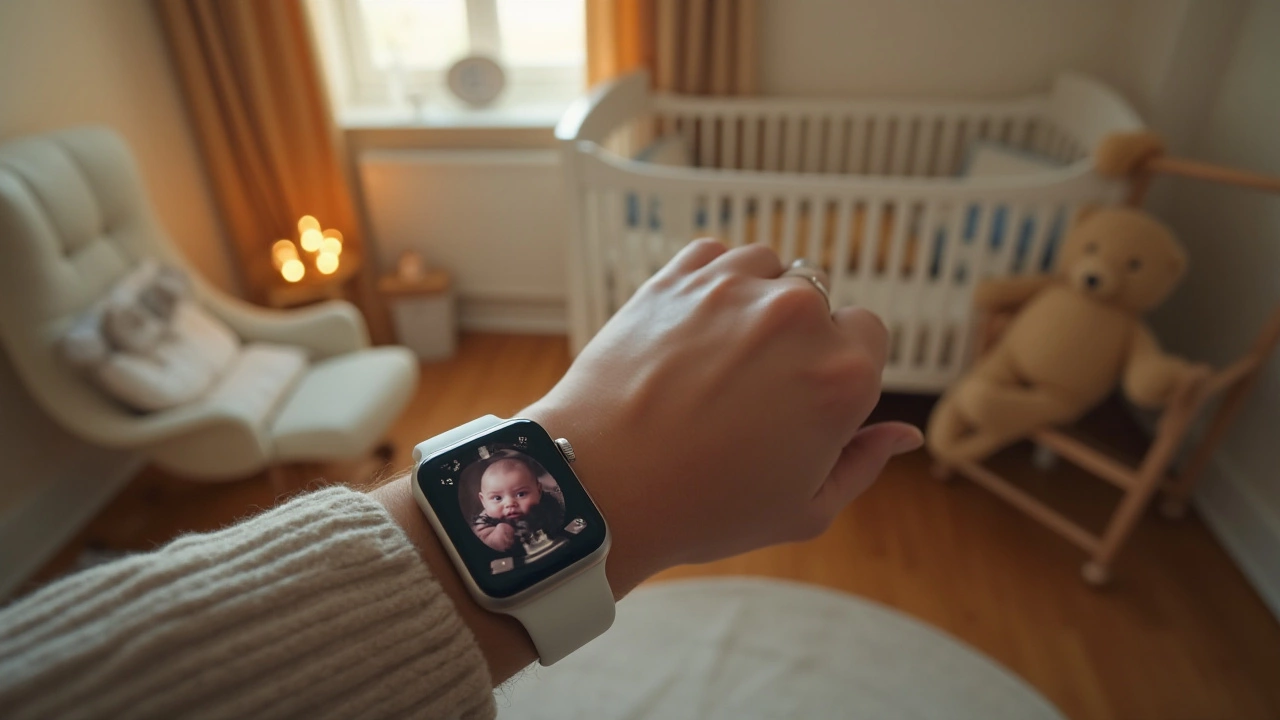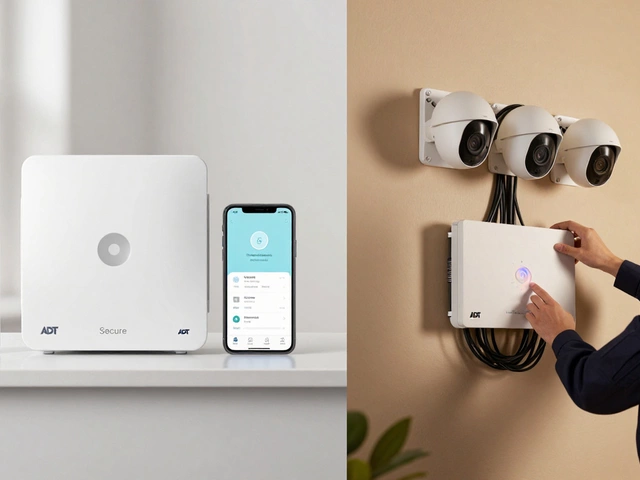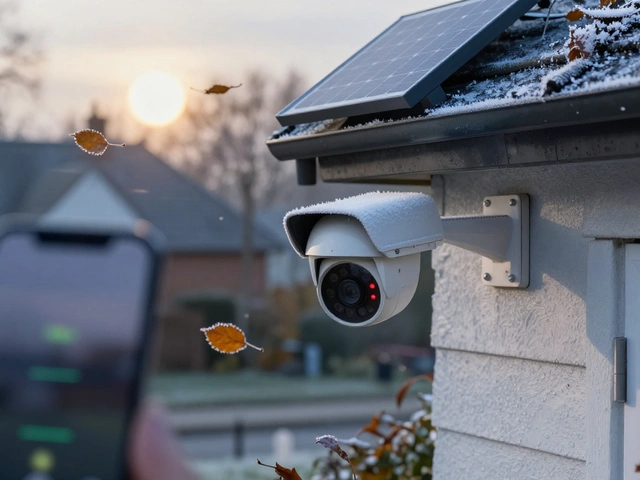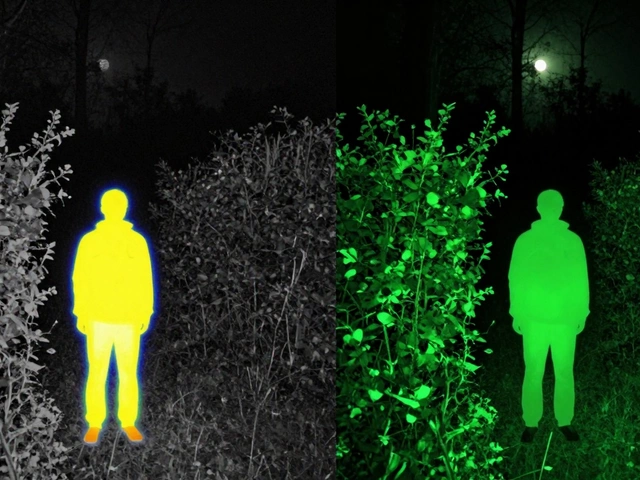In today's tech-savvy world, the Apple Watch has become more than just a timepiece or fitness tracker. Many parents are exploring its potential as a tool to keep an eye on their little ones, considering the innovative features packed into this compact device.
While it may not be designed specifically as a baby monitor, the Apple Watch offers functionalities that can be creatively harnessed for this purpose. From real-time alerts to seamless connectivity with other Apple devices, it presents a modern alternative to traditional baby monitors.
It's essential, however, to weigh the pros and cons before relying solely on your watch for monitoring duties. Understanding both what it can and cannot do will help ensure the safety and comfort of your child while maintaining peace of mind for yourself.
- Understanding the Apple Watch's Capabilities
- How to Use Your Apple Watch as a Baby Monitor
- Advantages and Limitations of Using Apple Watch
- Tips for Safe and Effective Monitoring
Understanding the Apple Watch's Capabilities
The Apple Watch, since its debut, has undergone significant evolution, morphing into one of the most versatile gadgets in our digital arsenal. This nifty device, while primarily known for tracking fitness metrics and providing seamless notifications, has the potential to serve parents in a rather unique way—as a baby monitor. At first glance, one might not associate wrist technology with infant care, but when we look closer, we find dimensions worth exploring. Equipped with clear audio, the ability to send quick messages, and various accessibility features, the Apple Watch can offer unexpected benefits. This is particularly true when considering the integration within the larger Apple ecosystem. Using Wi-Fi or cellular data, parents can keep tabs on infants, leveraging apps to turn their watch into a communication device.
Among its many functions, the ability to connect seamlessly to the iPhone or other Apple devices stands out. For example, apps like “Baby Monitor 3G” allow for audio surveillance when paired with another iOS device. By utilizing the watch's discreet alerts and notifications, parents can monitor the baby’s room without being intrusive. Another noteworthy feature is the heart rate monitor, which, though not typically used for babies, indicates the device's potential for tracking conditions in an emergency. Yet, you'll find limitations, such as battery life and audio quality, that require consideration before replacing traditional monitors.
Health and safety tracking features embedded in the Apple Watch are quite advanced. They provide parents with tools to swiftly respond to potential issues while being hands-free. Such capabilities hinge on seamless integration and robust connectivity, both achievable within the Apple environment. While the watch itself doesn't produce or record video feeds, it pairs effortlessly with devices that do. As such, pairing with a smartphone or another device via apps can fill that gap. This multi-device ecosystem transforms the fundamental capabilities of an ordinary watch, focusing on family needs without significant investment in separate technology.
For parents looking to embrace technology, it facilitates an added layer of security. The watch's ability to act as a short-distance intercom can be particularly helpful in large homes, seamlessly bridging communication between rooms. This may save time usually spent commuting through quiet halls at baby's nap time. Interestingly, an Australian study noted a 75% satisfaction rate among parents using smart watches for monitoring purposes. By learning to adapt the technology available, parents find unconventional methods to ensure their little one's wellbeing, bringing peace of mind that is often invaluable. If anything, it demonstrates how technology continually reshapes parenting practices.
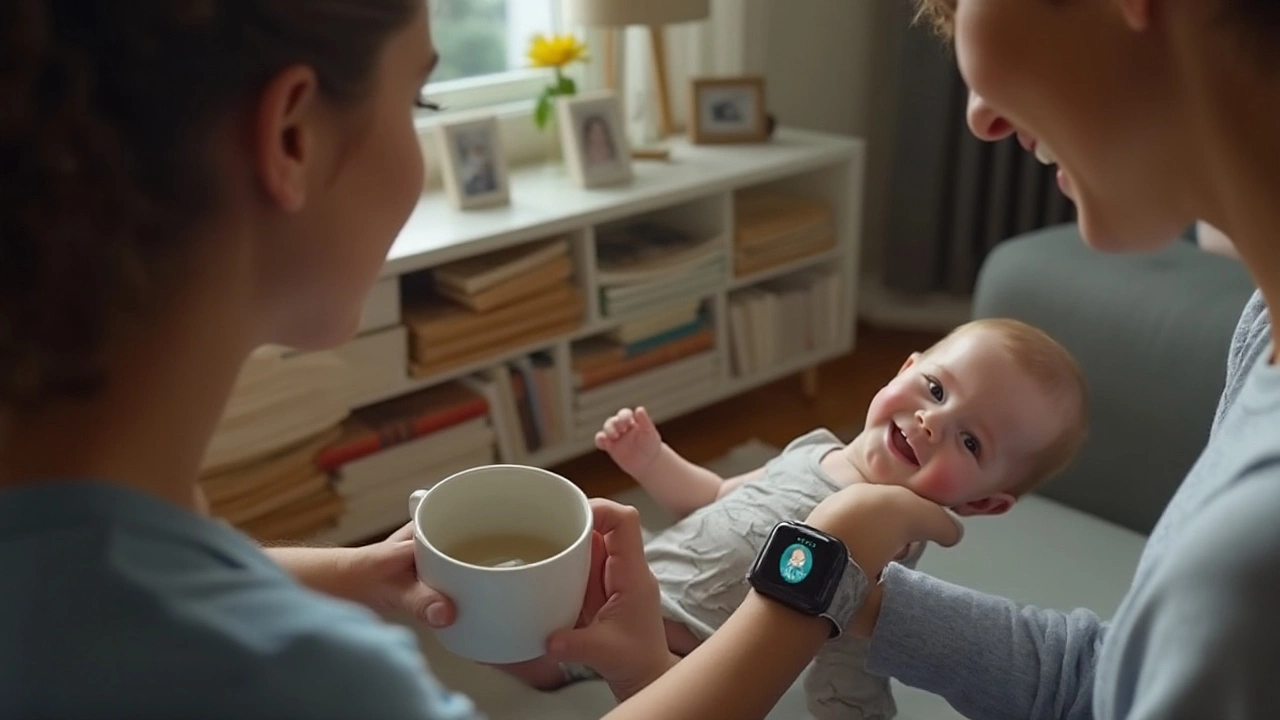
How to Use Your Apple Watch as a Baby Monitor
The idea of using your Apple Watch as a baby monitor might seem unconventional, yet it's entirely feasible with some creativity and technology already at your disposal. Among its myriad of applications, the watch's connectivity and alert features can be harnessed for monitoring your baby. First, it's crucial to understand that the Apple Watch itself doesn't have a built-in baby monitor app. Instead, you'll need to rely on your iPhone and possibly some third-party apps that are compatible with both your phone and watch. Setting up involves ensuring your iPhone is strategically placed in the baby’s room, where it can capture both audio and video signals. This setup allows your iPhone to transmit real-time data to your Apple Watch, ensuring you stay updated on your child's status without being physically present in the room.
To get started, consider apps like Cloud Baby Monitor or Baby Monitor 3G. These apps are designed to seamlessly connect your phone and Apple Watch through the shared Apple ecosystem. Installing and configuring one of these applications is usually straightforward, and it keeps you in tune with your baby’s activities without a hitch. After downloading your chosen app, follow the setup instructions to sync your devices. This generally involves Wi-Fi or Bluetooth connectivity and selecting the right presets for the best monitoring results. Remember, while your watch won't stream video, it can alert you about significant movement or noise detected in the baby’s room, providing crucial peace of mind when you're occupied with other tasks.
According to tech expert Sarah Perez, "The Apple Watch may not replace traditional baby monitors, but it has its own advantages in terms of portability and integration with other smart devices, making it a unique choice for tech-savvy parents."
Once your system is set, consider implementing a few practical tips to enhance your experience. First, make sure your iPhone is steady and has an unobstructed view of the crib or play area to maximize its effectiveness. Secondly, ensure both devices are sufficiently charged or remain plugged in during use, as live streaming can deplete battery life rapidly. It's also wise to test your setup during different times of the day under varying lighting conditions to ensure optimal functionality. Also, mute notifications for other apps on your Apple Watch to focus solely on the baby monitoring function. These adjustments not only improve the reliability of the monitoring but also allow you to maintain a secure environment without hiccups.
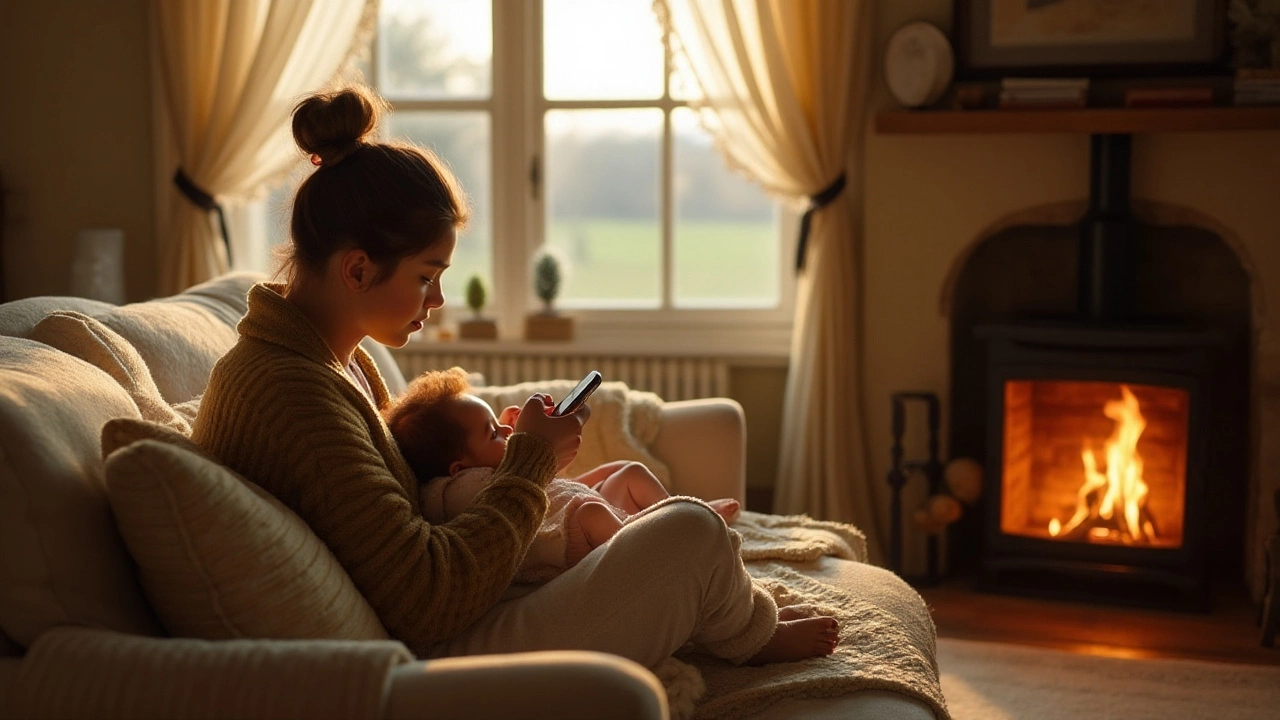
Advantages and Limitations of Using Apple Watch
The emergence of wearables like the Apple Watch has opened up new avenues for parents who are looking for innovative solutions in baby monitoring. One of the most significant advantages of using an Apple Watch is its seamless integration with other Apple devices. This connectivity allows parents to monitor their baby through their iPhone or iPad and receive alerts directly on their watch. Imagine being able to receive notifications about your baby’s activity without being tethered to a baby monitor display. The convenience and portability of having this information literally on your wrist cannot be understated, making it easier to multitask or move around the house while ensuring your little one’s safety.
The Apple Watch also comes with a host of features that can be beneficial for parents. Its high-quality microphone and speakers mean that you can listen to your baby and even talk to them, similar to an audio baby monitor. Additionally, the heart rate sensor, though primarily meant for fitness, adds an extra layer of reassurance as it allows parents to monitor their own stress levels, ensuring they stay calm and collected. For the tech-savvy parent, the ability to use third-party apps designed specifically for baby monitoring on the Apple Watch provides customization options that traditional baby monitors might lack.
However, it’s important to recognize the limitations. The most notable drawback is that the Apple Watch is not a dedicated baby monitoring device. There could be gaps in functionality that may not fully substitute a traditional baby monitor's features. The watch’s battery life, while impressive for its size, may not stand up to the demands of overnight monitoring, requiring frequent charging which can interrupt usage. The audio and video quality might not be on par with high-end dedicated monitors, and there can be lag when transferring video feeds from one device to another, particularly if there is network congestion.
A
recent review from The Vergedescribed the Apple Watch as "a formidable companion" for tech enthusiasts who wish to extend their parenting toolkit without additional gadgets. But it also cautioned that "depending on a watch to handle the complex task of baby monitoring requires careful consideration of the device's scope and limits." Additionally, another limitation could be the potential for distraction. With notifications for messages, emails, and other apps constantly coming in, parents might find themselves inadvertently focusing more on their watch than their baby, which could impede the primary task of monitoring.
Nevertheless, for parents who are already in the Apple ecosystem and are looking for a supplementary tool rather than a replacement for a traditional baby monitor, the Apple Watch can be quite useful. By addressing its limitations and leveraging its strengths — such as portability and connectivity — it can become a modern, albeit supplementary, solution to classic baby monitoring challenges. Ultimately, its effectiveness as a baby monitoring device largely depends on each parent's needs and lifestyle.

Tips for Safe and Effective Monitoring
Adopting modern technology such as the Apple Watch for baby monitoring may not initially seem straightforward, but with some ingenuity, it can be both safe and effective. To start, ensure that your watch is fully charged, as it should remain functional through the night or during periods when you need undisturbed monitoring. It can be disconcerting to look at your wrist only to realize the watch has run out of battery at a crucial moment. Parents should consider setting regular charging schedules, aligning them with their child's sleep pattern to avoid downtime.
Positioning is key when using your watch as a monitor. Though not wearable by the baby, leveraging its connectivity with an iPhone or iPad can help. For instance, activating the watch’s microphone via apps like FaceTime Audio or Walkie-Talkie allows you to listen to the child’s sounds while in a different room. This method turns your smart device into a listening post, capturing any immediate disturbances that require parental attention. Be sure to place the connected device at a safe distance to avoid any potential hazards or distractions for the baby.
Another crucial tip involves utilizing the notification settings wisely. Customizing these can ensure you receive vital alerts while filtering out unnecessary distractions. Parents can program their Apple Watch to send alerts for specific apps used for childcare, increasing awareness during crucial periods. Creating `Do Not Disturb` schedules can further enhance focus at the right times. Consider the security settings on these apps, keeping sensitive data encrypted and understanding that while convenient, privacy should not be compromised.
The ambient noise levels within a household can affect how effectively the watch functions as a monitoring device. Reducing background noise around the sleeping area increases the clarity of sounds captured by the connected devices. This might involve soundproofing measures or strategically running white noise machines to mask less pertinent ambient sounds.
"The greatest gift we give our children is not the opportunity to succeed, but the teaching to embrace challenges and find their path,"Carrie's research, though not directly focused on tech use, underlines awareness and diligence as critical elements in parenting.
Enhance the watch’s technological capabilities through apps specialized for baby monitoring. These apps often come equipped with additional functionalities like logging sleep patterns, setting sleep goals, or even reminding parents when it's time for a nap. Depending on the app, some might also offer video monitoring when tethered to an appropriate camera, bridging any gaps in audio-only surveillance. These features effectively turn an Apple Watch into more than just a supportive device, pushing it closer to a comprehensive monitoring solution.
By fully understanding and leveraging the device's potential, an Apple Watch can augment traditional baby monitoring approaches. However, it requires ongoing adjustment and careful application to make sure it not only complements but augments a parent's ability to ensure their child's safety and comfort. When embraced thoughtfully, technology provides a canvas of opportunities, much like painting vibrant stories on the tapestry of everyday life's complexities.

